By Dan Weisz
One year ago I was able to follow a family of Great Horned Owls whose nest was in a palm tree adjacent to a friend’s house. Over the years, the palm tree had been trimmed by cutting the fronds a foot or two from the tree’s base but the base of the fronds remained on the plant. The top of those frond bases formed a level surface for the owls to nest on, well below the green growing palm fronds. Across the street, one of the parents rested in the shade of the palm tree while keeping an eye on the young owlets in the nest palm.
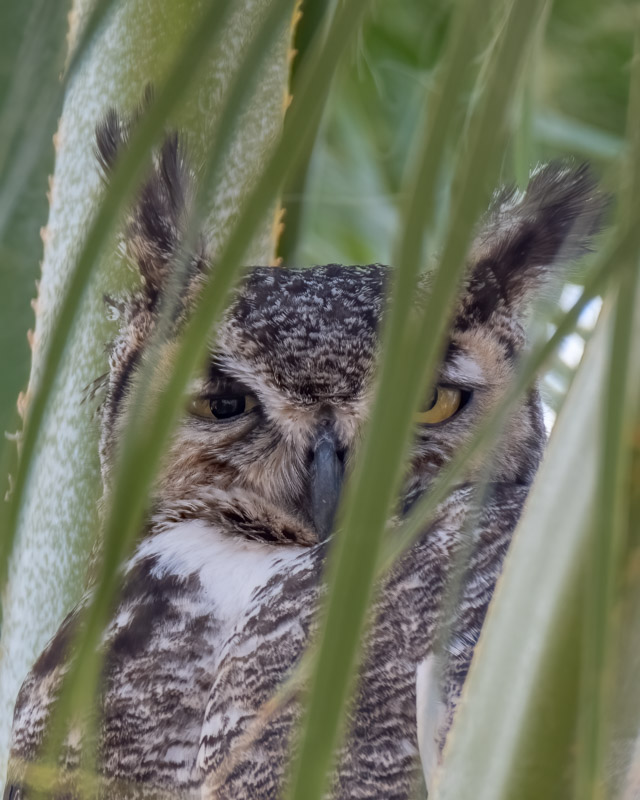
Here you can see the surface that the owls used as a nest, on top of the ring formed by the base of all of the cut palm leaves. The newest palm fronds (leaves) are above the nest surface. By the time I took this photo, only one baby owlet remained on the nest site (seen here standing on the nest’s surface). The two other Great Horned Owlets had already fledged, leaving the nest and spending their days on the other side of the homes on the street. This remaining owl was apparently the last one to hatch so the last expected to leave the nest.
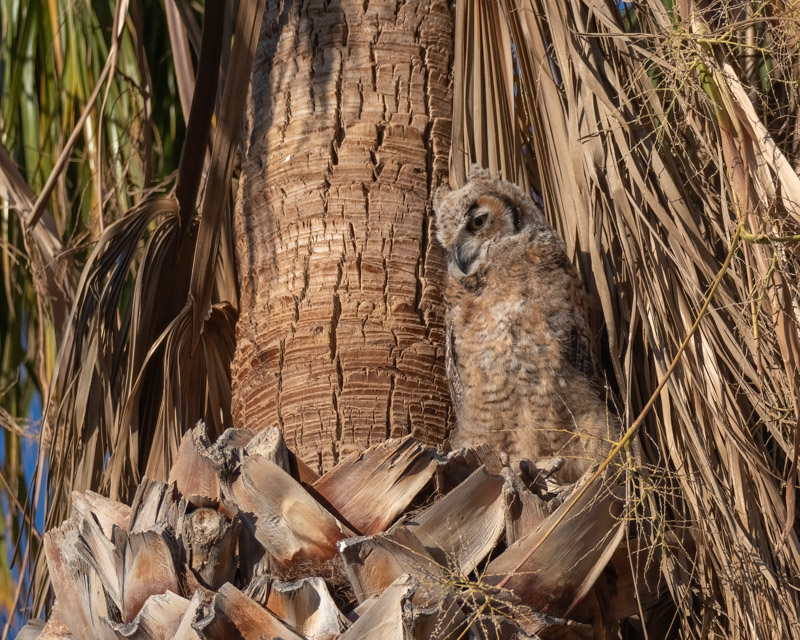
By the time I became aware of this year’s nest, two of the young owlets had fledged. They were spending their days behind my friend’s house on the slope of the desert canyon. Because two owlets were in that area, the Great Horned Owl parents spent their days in that area as well. From this saguaro perch, Mom had a clear view of the palm tree nest which held her third and youngest owlet.
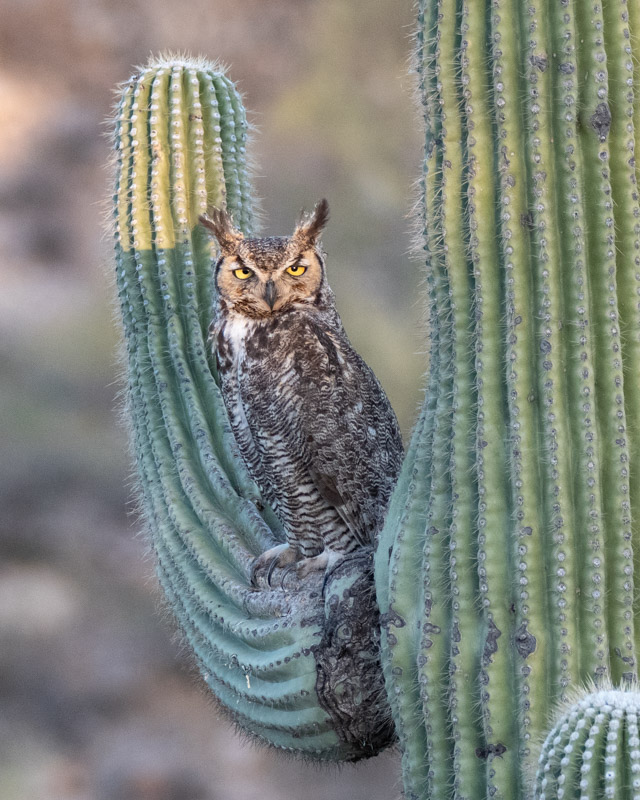
Because of the slope of the land, the owl was right at my eye level (although she was 20 feet up in the saguaro) . It allowed for some direct portraits of her and many, many opportunities to observe her. She was staring directly towards the sun at the end of the day. You can see the brood patch running down the middle of her breast feathers.
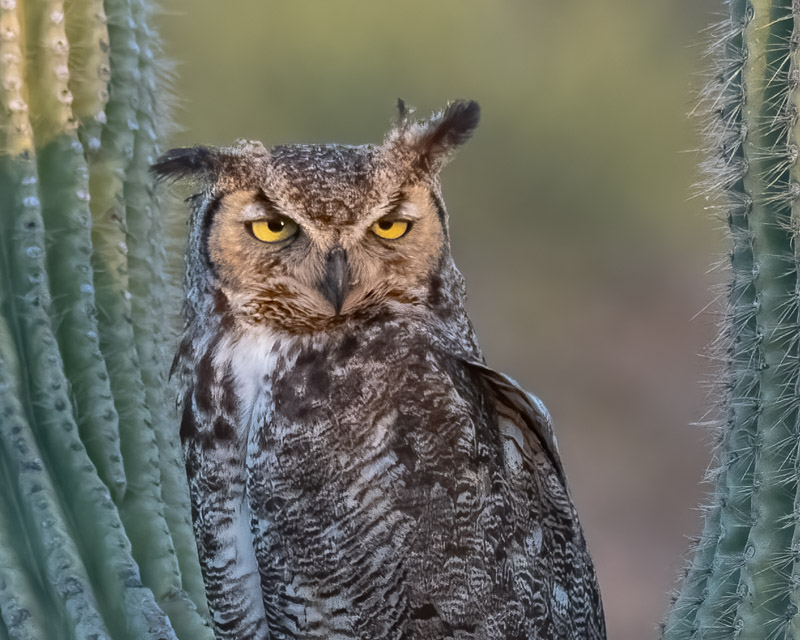
The sun has dropped a bit more in the sky. Now, instead of direct sunlight on the Great Horned Owl, the light is above her head. She is facing away from the palm tree but looking over her shoulder at her last little one still in the nest..
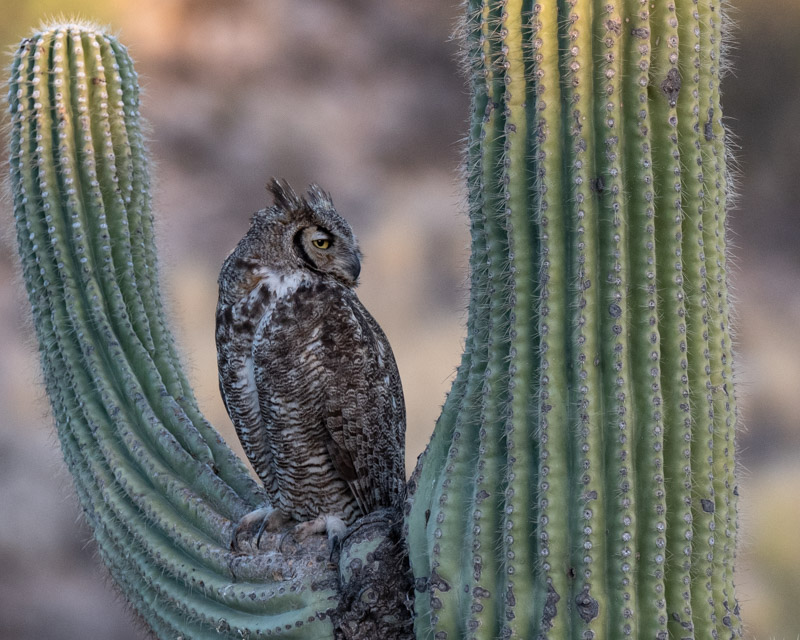
At the same time, one of the fledged owlets was perched on the drooping arm of a nearby saguaro. It’s perch was mostly hidden from view behind two palo verde trees.
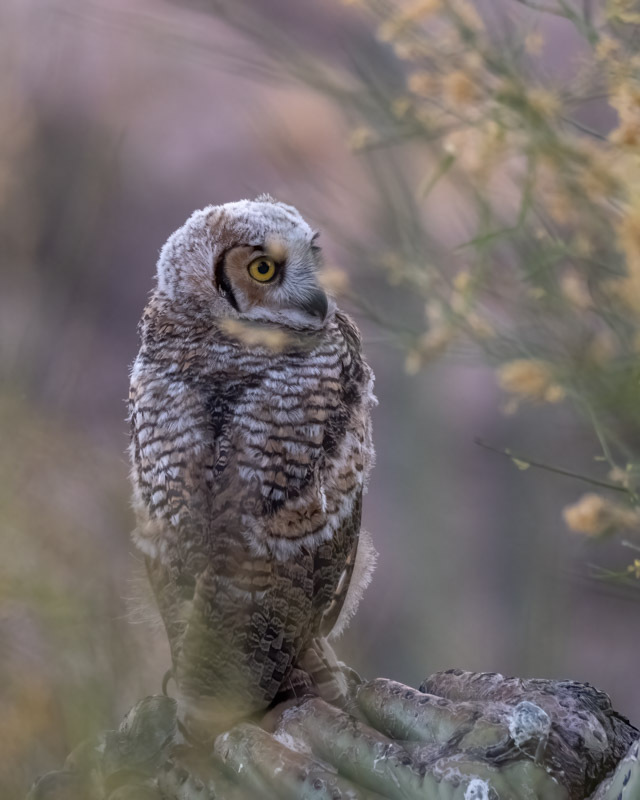
The owlet was perhaps 8 weeks old at this time. Great Horned Owlets begin moving onto nearby branches at the nest site around 6 weeks of age and are capable of a few short flights at 7 weeks. My hunch is that this owlet and its nearby sibling were old enough to get around somewhat. We did see them both fly down the canyon perhaps 40 yards on that afternoon. The owlets were within a week or so of much longer sustained flights.
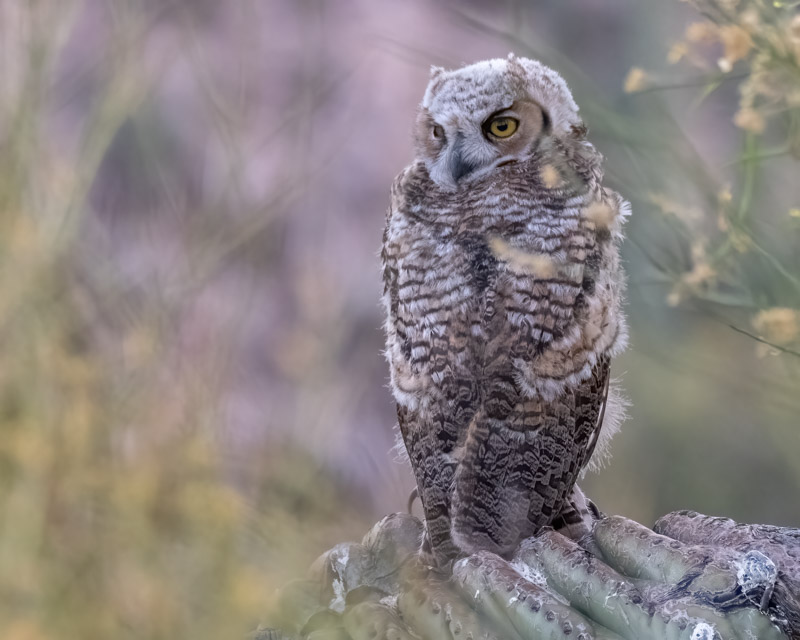
Great Horned Owlets spend much of their daytime napping. It seems like they can fall asleep almost instantly.
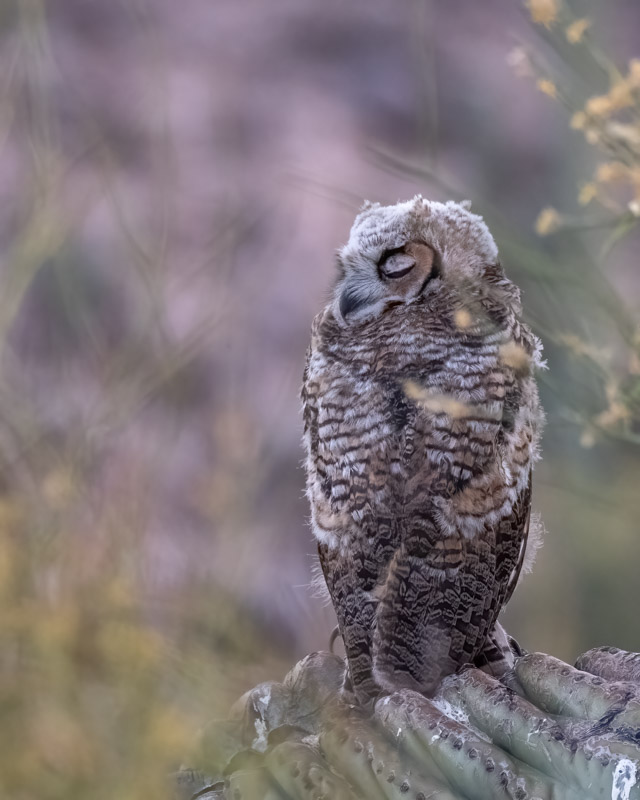
Back to mom, the entire saguaro and valley behind her are now in shadow and sunset is about to happen. She spent her time looking around, watching the owlets, watching us, and cat-napping. Those large eyes are part of what fascinates we humans when we observe owls. The eyes are huge and we imagine there is deep thinking behind them.
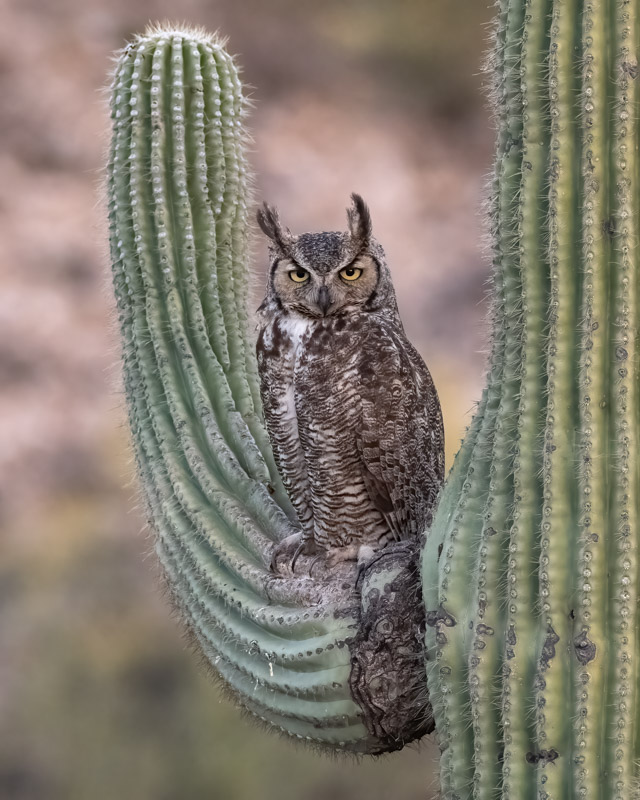
We anthropomorphize so readily. When the owl tipped her head, we could well imagine that she might have been judging us, or at least studying us more intently.
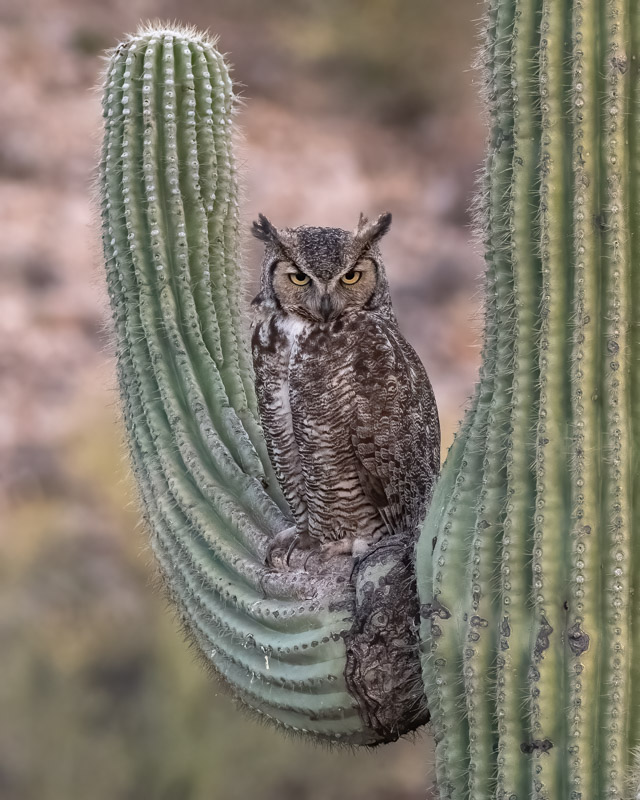
Owls and raptors often go through a variety of stretches before getting ready to fly, especially if they have been sitting for a long time. This Great Horned Owl had already completed long stretches of each wing along her side. As she was watching us, she began the final stretch with her wings over her head, her head lowered, and her tail spread while standing on only one leg. This is a full body stretch and amazing to see.
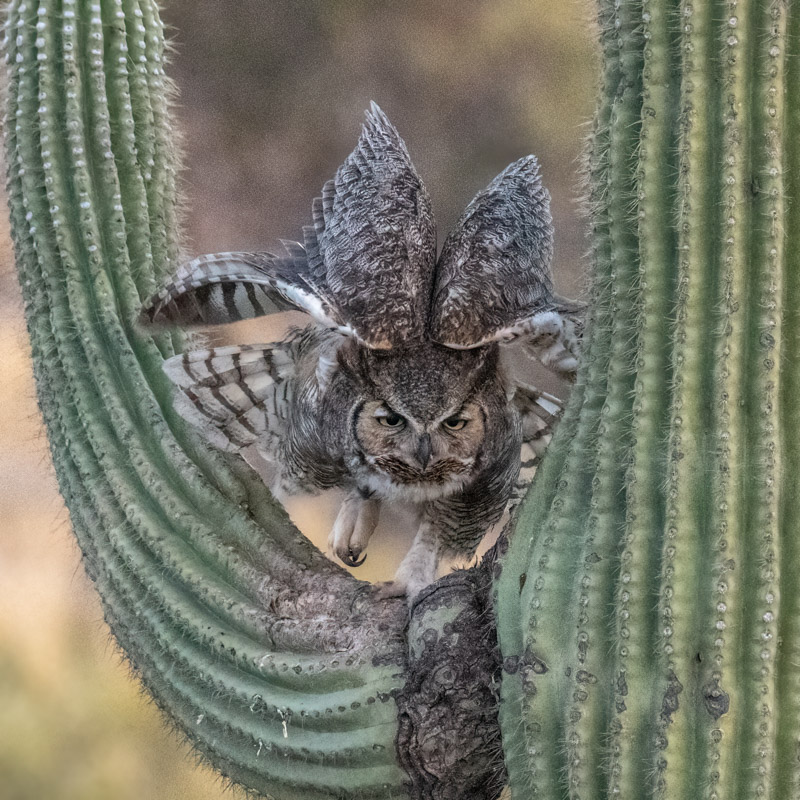
Then she turned and roused, shaking all of her feathers to relax and put them in place.
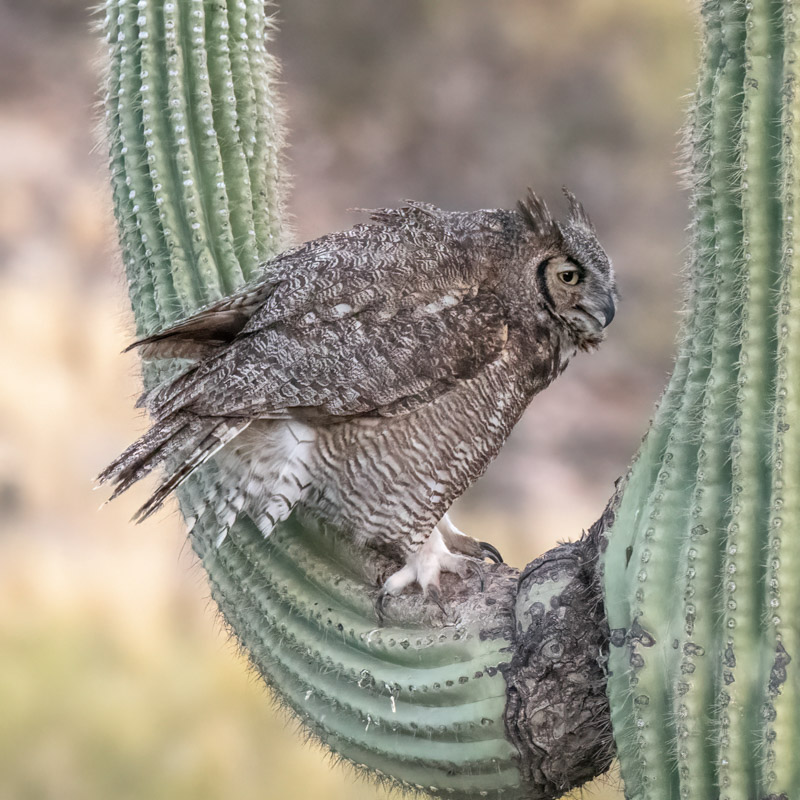
I spent several days in a row in my good friends’ backyard. This Great Horned Owl family was fascinating to follow and I have many more photos of them to share.
